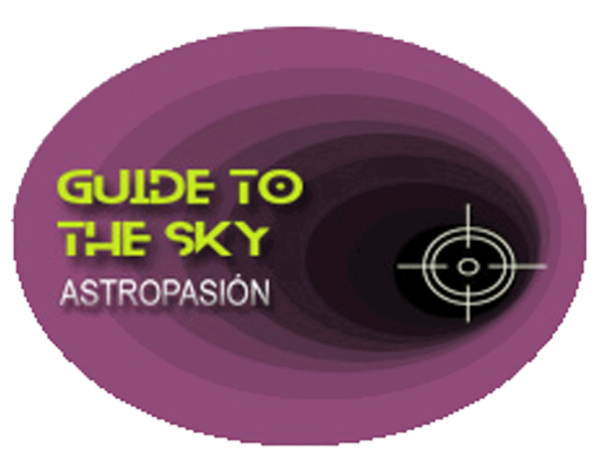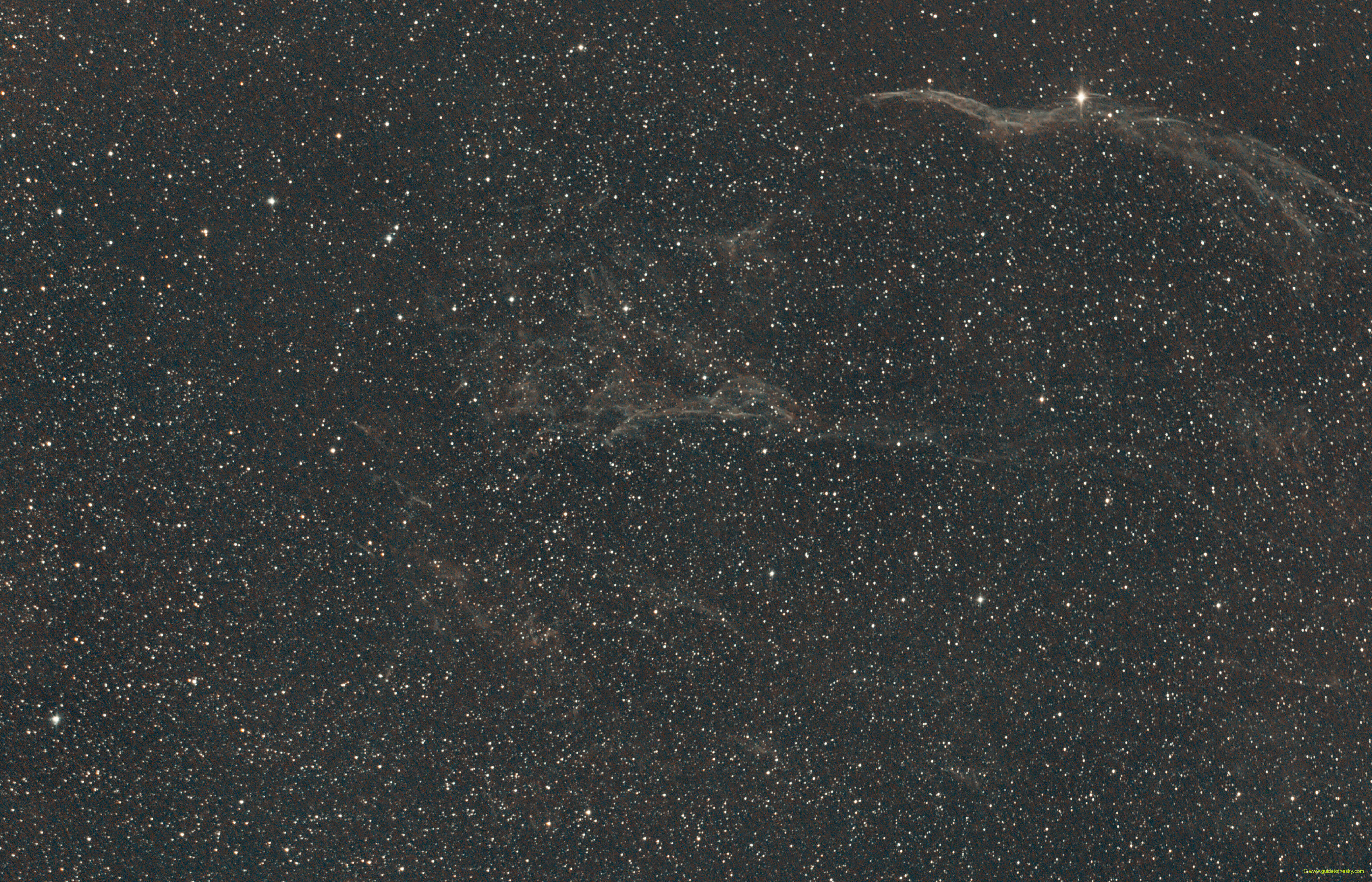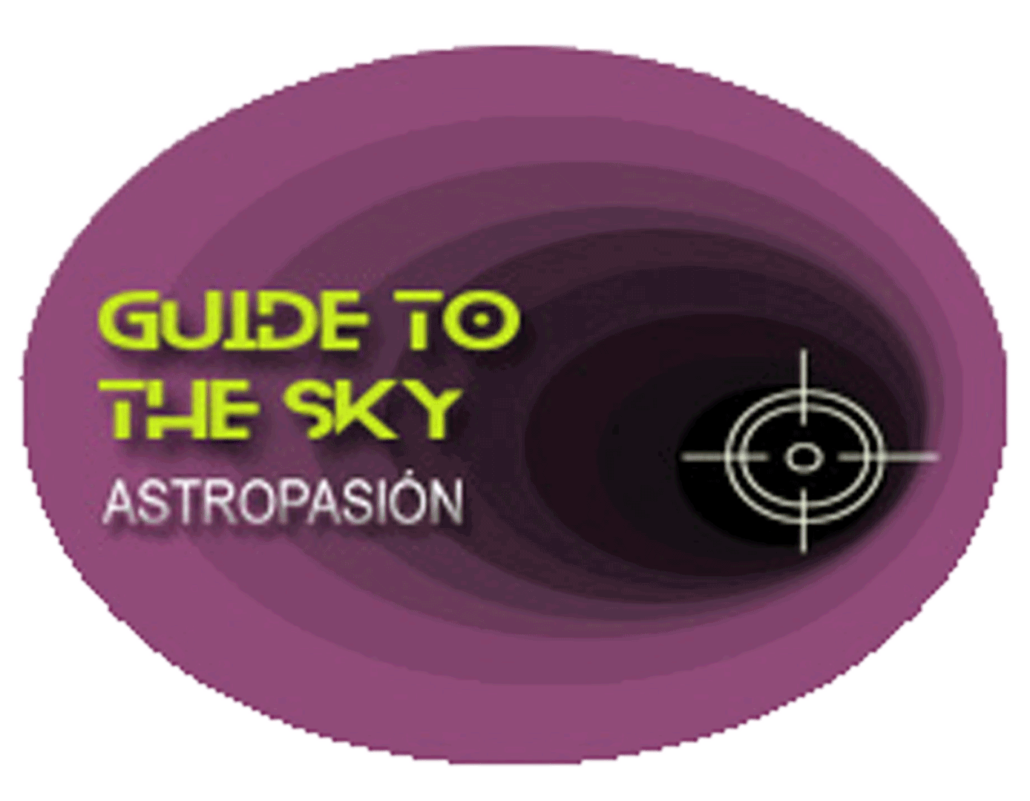NGC 6960 - Cygnus
Una estrella de la cuarta magnitud enclavada en la nebulosa y parece querer iluminarla pues es en los alrededores de esta estrella que está una de las regiones más brillantes de la nebulosa del Velo.
NGC6960 - Nebulosa del Velo, parte oriental - en la IA
NGC 6960 is a fascinating and well-known object in the constellation Cygnus, commonly referred to as the Western Veil Nebula or the Witch's Broom Nebula. It's part of the larger Cygnus Loop, a supernova remnant. Here's a more detailed breakdown:
- Nature: Supernova Remnant
- Parent Structure: Cygnus Loop
- Constellation: Cygnus
- Distance: Roughly 2,400 light-years from Earth
- Apparent Magnitude: Approximately 7 (quite faint and best viewed with telescopes or in long-exposure photographs)
- Size: It spans a significant portion of the sky, covering about 3 degrees, which is roughly 6 times the diameter of the full Moon.
- Origin: It is the result of a supernova explosion that occurred between 10,000 and 20,000 years ago. The expanding shock wave from the explosion is interacting with the interstellar medium, heating and ionizing the gas. This causes the gas to glow, producing the beautiful filaments we observe.
- Appearance: In images, it looks like delicate, luminous filaments or wisps of gas, resembling a veil. The colors are primarily red (due to hydrogen-alpha emission) and blue/green (due to oxygen emission).
Key Features and Significance:
- Shock Waves: The nebula's structure is directly related to the shock waves propagating from the supernova explosion. As these shock waves plow through the interstellar medium, they heat the gas, causing it to glow.
- Composition: The emitted light reveals the composition of the material in the nebula, including hydrogen, oxygen, sulfur, and other elements.
- Studying Supernova Remnants: NGC 6960 and the Cygnus Loop are valuable for understanding the evolution of supernova remnants and their impact on the interstellar medium. Studying these objects provides insights into how heavy elements are created and dispersed into space, enriching the material for future star formation.
- Visual Observation: While visually stunning in photographs, NGC 6960 is a challenging object to observe with the naked eye. It requires a dark sky, a telescope (preferably with a wide field of view), and often a special filter (such as an Oxygen-III filter) to enhance the contrast of the nebula against the background sky.
Relationship to the Cygnus Loop:
The Cygnus Loop is a much larger structure, of which NGC 6960 is just a prominent part. Other notable components of the Cygnus Loop include:
- NGC 6992, NGC 6995: The Eastern Veil Nebula, a similar but distinct structure to NGC 6960.
- Pickering's Triangle (or Pickering's Wedge): A fainter, more diffuse region.
All these components together form the overall shell-like structure of the Cygnus Loop.
In summary, NGC 6960 (the Western Veil Nebula) is a breathtaking remnant of a supernova explosion, showcasing the dynamic processes that occur when a star reaches the end of its life and profoundly impacts its surrounding environment.
Más información sobre NGC 6960 en NASA/IPAC.
Mapa alrededor de NGC 6960
Otros identificadores de NGC6960:
"LBN 191" ,"LBN 074.53-08.42" ,"NAME Cirrus Nebula" ,"NAME Filamentary Nebula","NGC 6960" ,"NAME Veil Nebula" ,


